

|
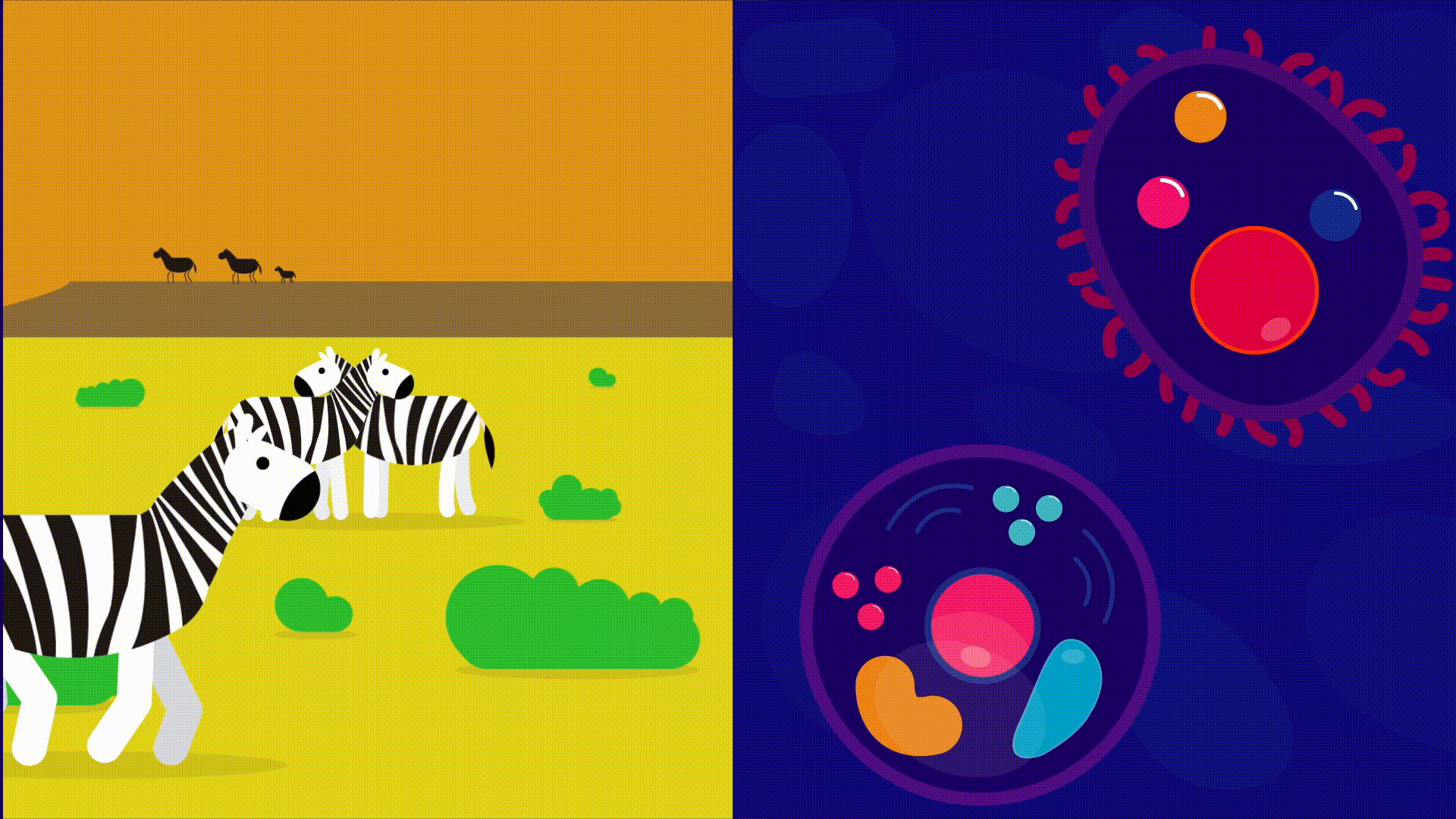
Earth is filled with magnificent creatures and a vast variety of ecosystems. From gigantic elephants to unimaginable tiny creatures.
In spite of their tremendous differences, they are all ruled by the same ruthless laws of nature. But, how do they work?
How does a cell know how much cholesterol has to be produced?
How is the number of zebras regulated?
Cellular cholesterol production
That’s right! Your body also produces cholesterol. So, in reality, you have two sources of cholesterol: food and your own cells might produce it.
But what exactly is cholesterol?
It’s a type of fat that, contrary to popular belief, is essential for you. In fact, you wouldn’t be alive without it.
It’s so essential because it allows our cell membranes to be stable and the right amount of flexibility.
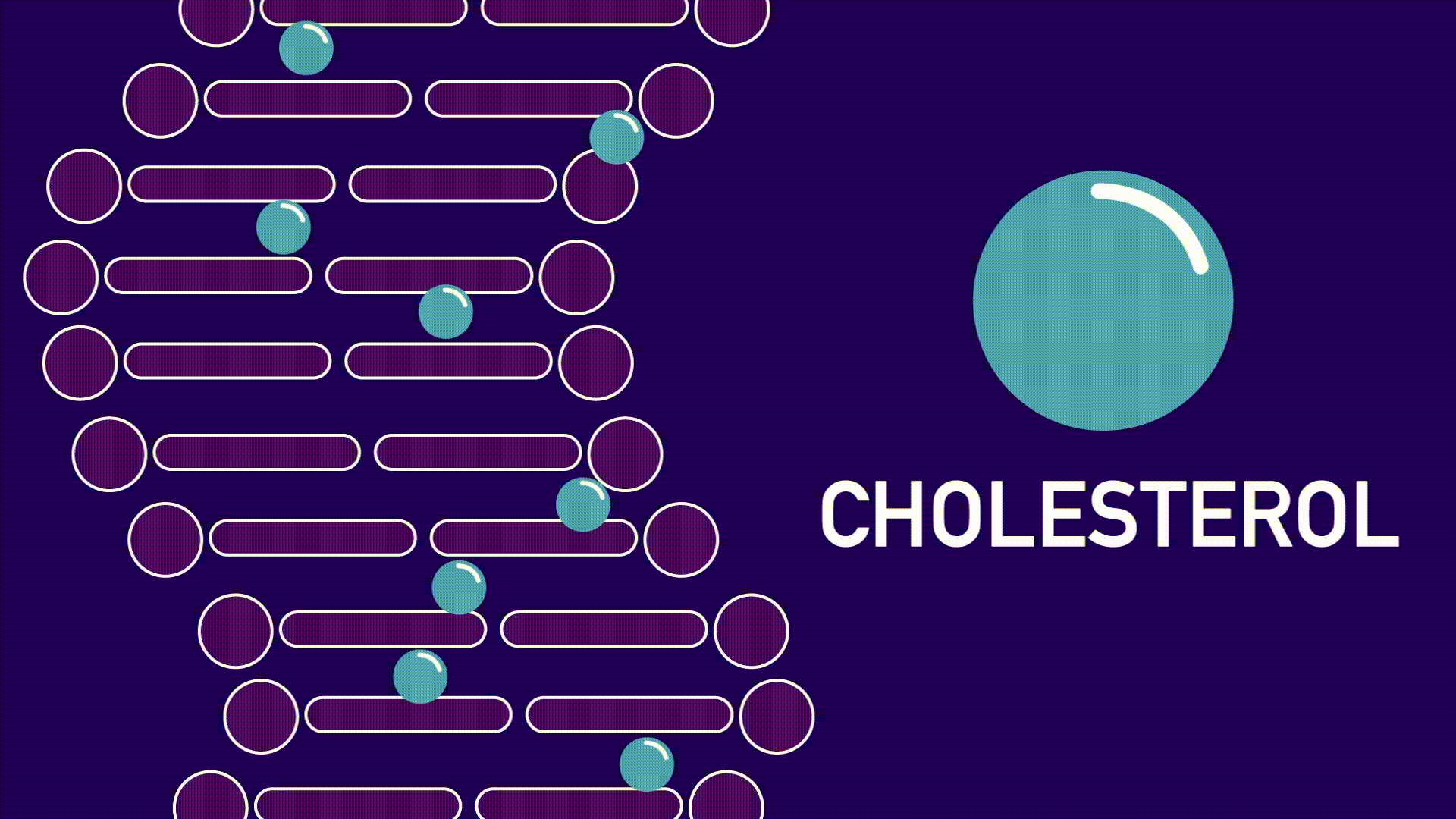
How?
Cholesterol is produced following a so-called metabolic pathway. This is essentially a route of chemical reactions that your cells follow to transform an initial substance (acetyl-CoA) to a final product (cholesterol). Like this:

This is all sped up by enzymes. Enzymes are basically proteins that accelerate a chemical reaction. Think of them as tiny machines that make things go quicker in your cell.
For example, here, HMG-CoA becomes mevalonic acid. This process is accelerated by HMG-CoA reductase (an enzyme).
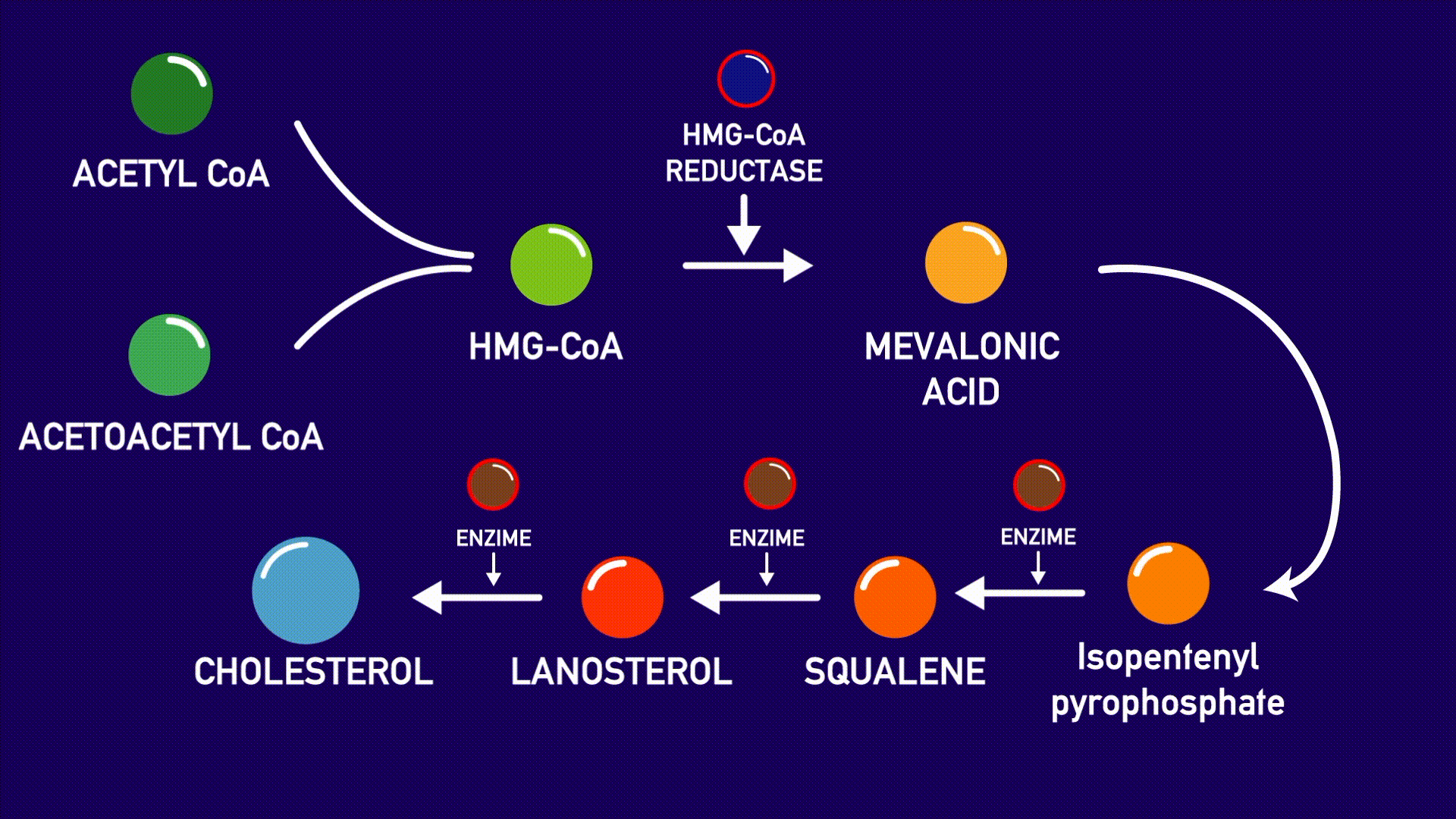
Although it has an intimidating name, HMG-CoA reductase is very important because it limits how much cholesterol can be produced.
But why? Why this enzyme in particular and not all the others?
Well, because cholesterol actually blocks or inhibits HMG-CoA reductase. In other words, cholesterol is blocking its own production!
Imagine this like a balance that always tries to be equilibrated. When there are high quantities of cholesterol, HMG-CoA reductase is inhibited and cholesterol production is stopped.
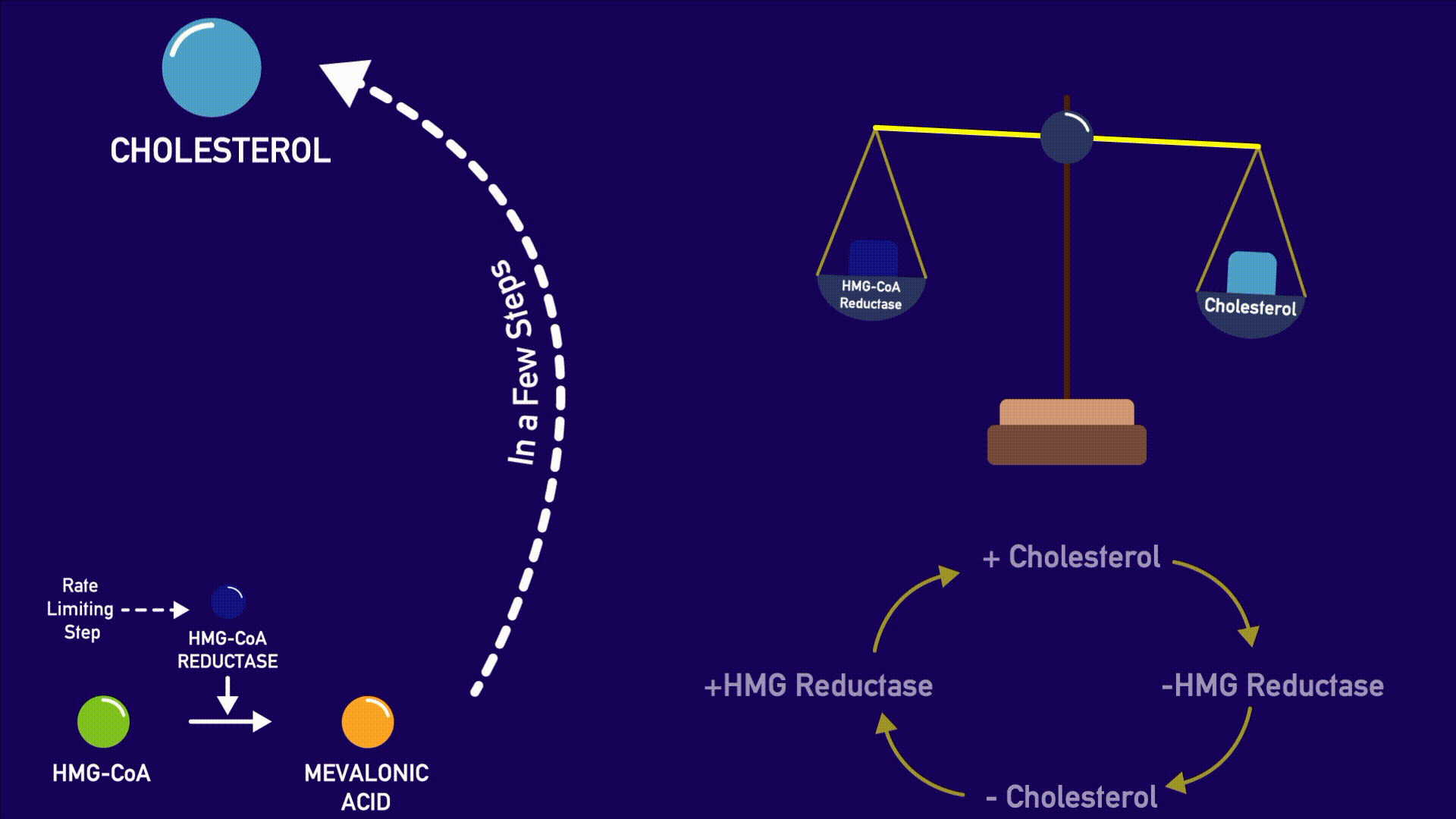
Nevertheless, when there is no cholesterol, HMG reductase can produce cholesterol again.
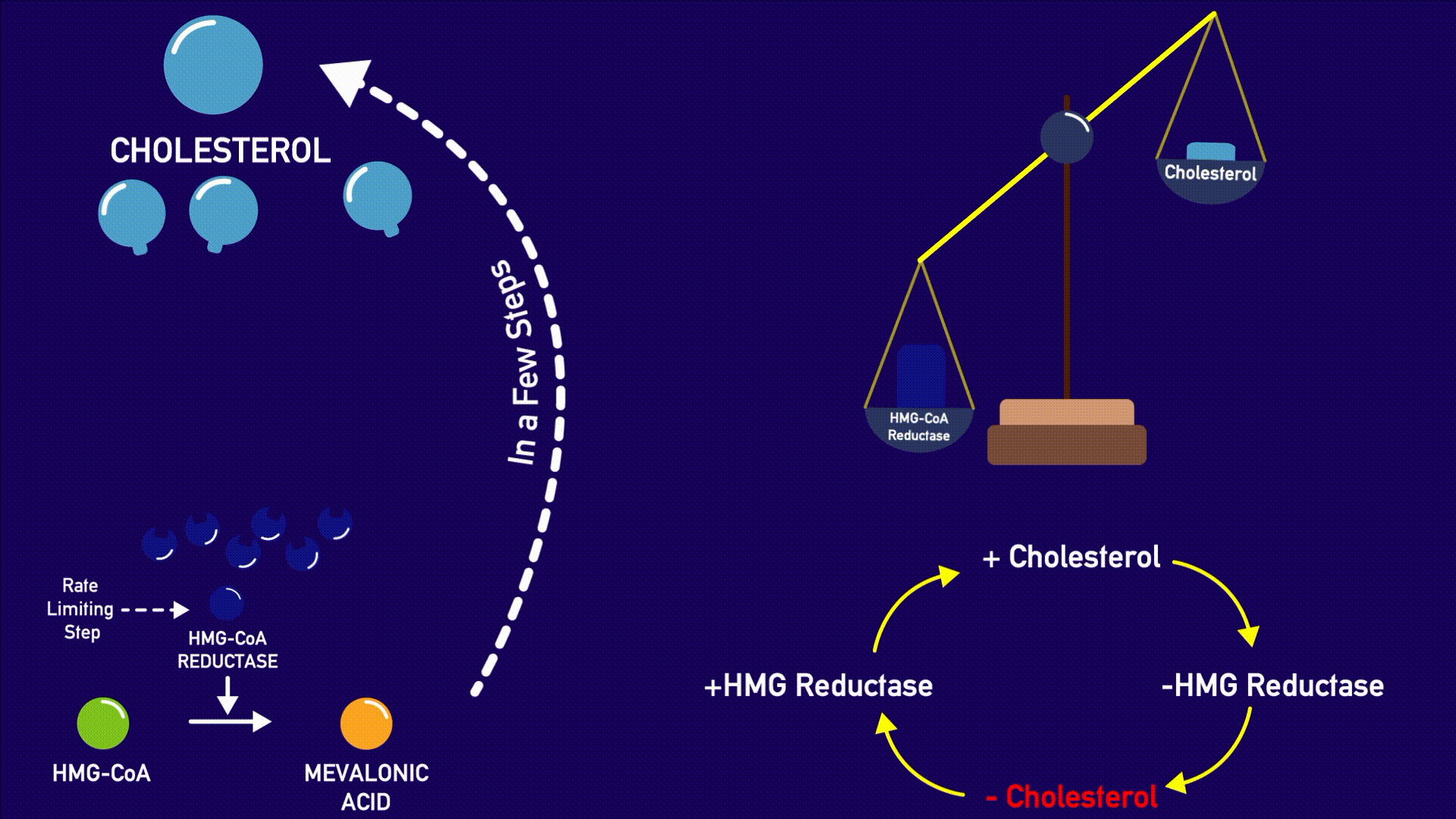
This cycle is called “The Feedback Regulation loop” and it continues until it reaches equilibrium; in other words: balance.
How the number of zebras is regulated
Here comes the fascinating part; these laws can also be applied at a larger scale. The same law seen in cholesterol production regulation is also seen at the level of whole ecosystems.
For example, the number of zebras in Serengeti National Park is regulated by the amount of grass available. If there are too many zebras competing for the same resources, the amount of grass will decay.
Alternatively, if there is a small number of zebras, the grass will start to grow again.

It is the same “Feedback regulation loop” and the same balance as with cholesterol.
Is there any way to break this cycle?
Yes; migration. Every year, 2 million herbivores travel from Serengeti National Park to Kenya. By doing this, they spread throughout a larger area with more grass to eat, hence breaking the loop.

How is cholesterol balance broken?
For cholesterol, this is more complicated. In our cell membranes, there are LDL receptors that collect cholesterol from our blood vessels. These are basically little hooks that grab cholesterol in the blood and transport it inside the cell. Like this:
However, the number of LDL receptors is regulated by cholesterol itself. So, if there’s a lot of cholesterol there will be fewer LDL receptors. If there’s little cholesterol inside the cell, there will be more LDL receptors. Just like HMG-CoA reductase.
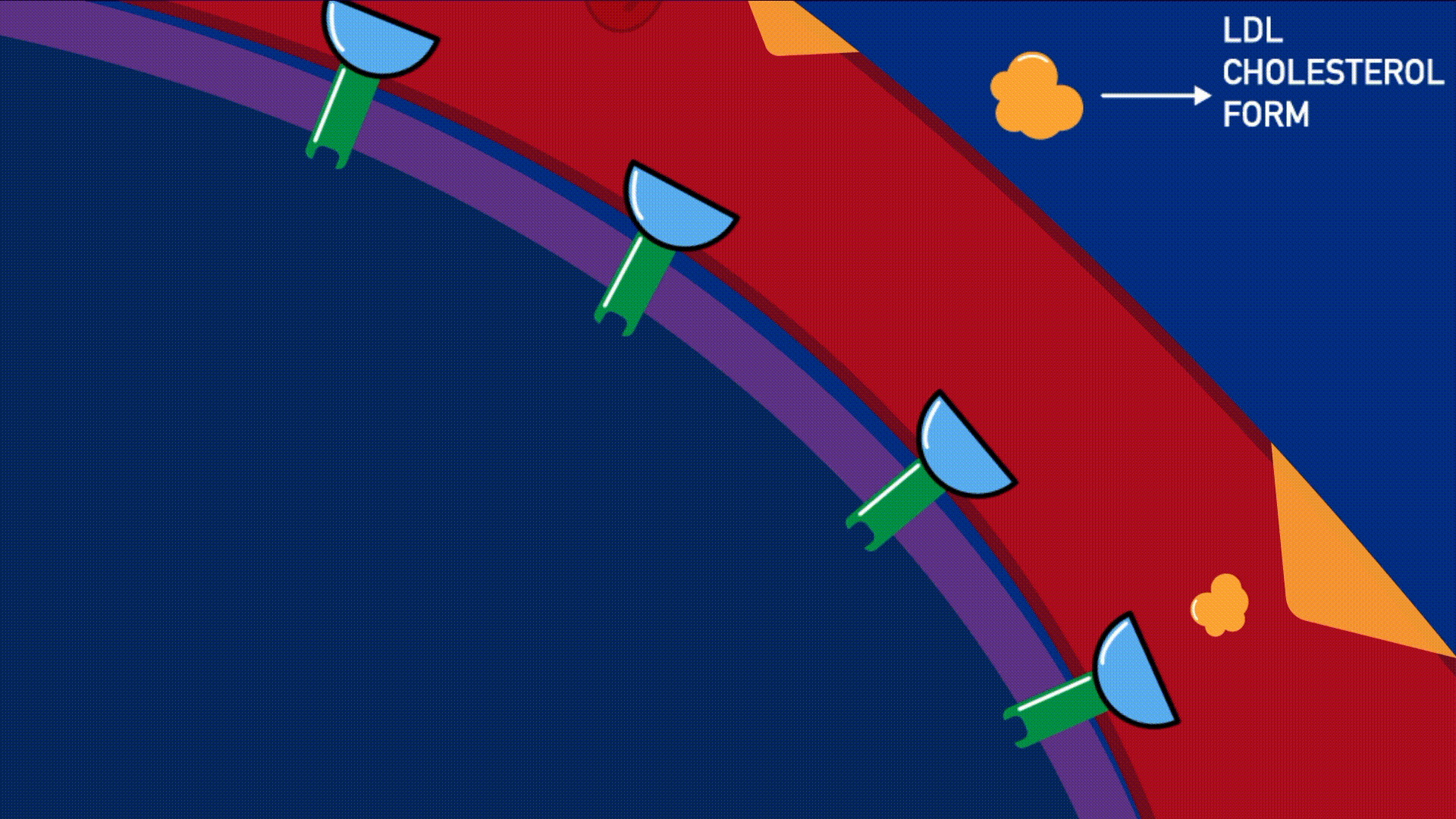
If we want to decrease the quantity of cholesterol in our blood, we have to inhibit HMG reductase (with some substance or drug).
By doing this, cholesterol cell production will be decreased and that will increase the number of LDL receptors which will decrease our blood’s cholesterol levels.
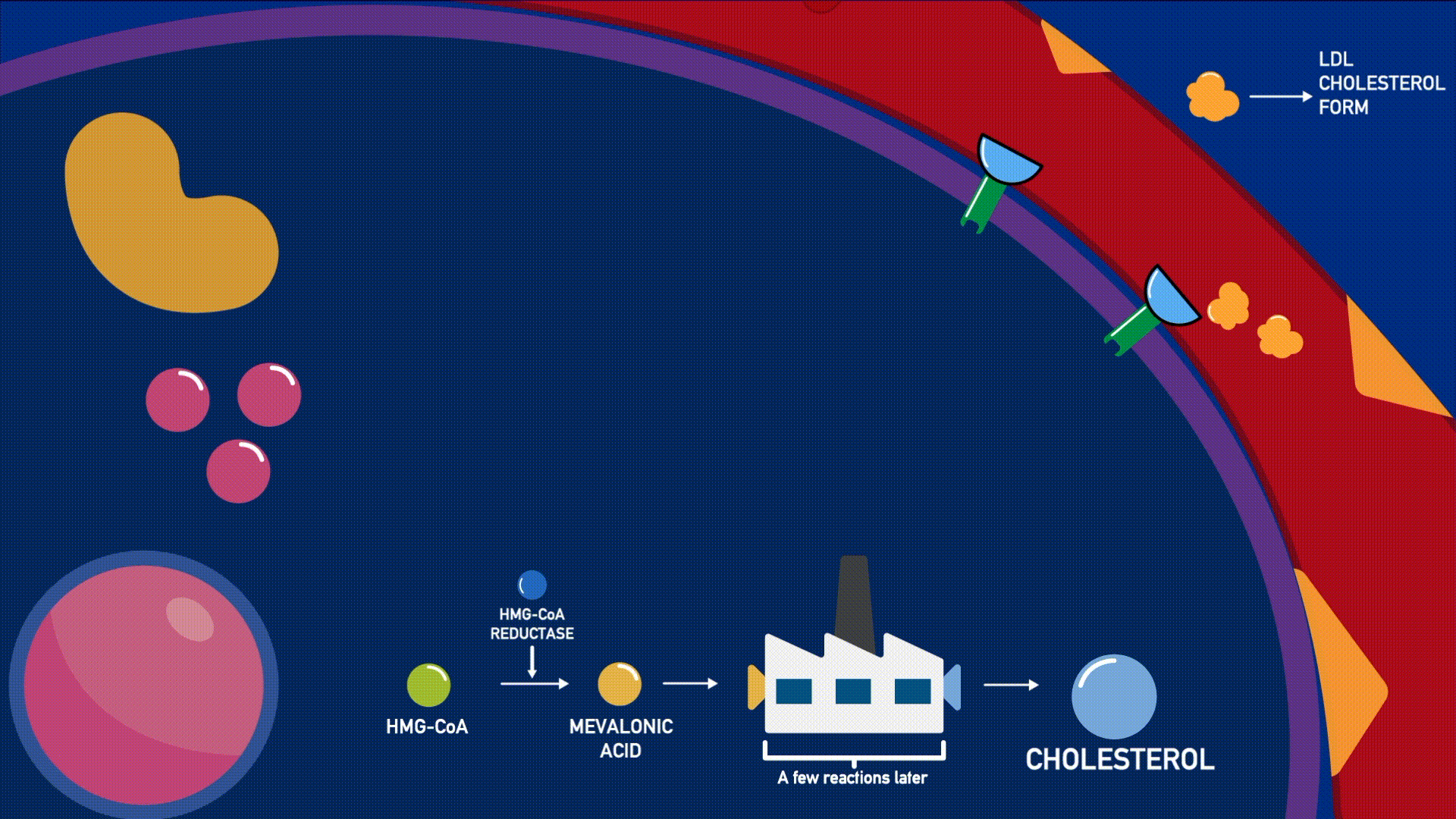
Isn’t that cool?
This blogpost is based on a video I made a couple of years ago:
Last updated: March 9, 2022









